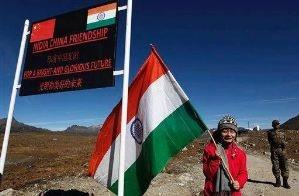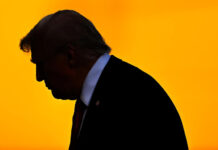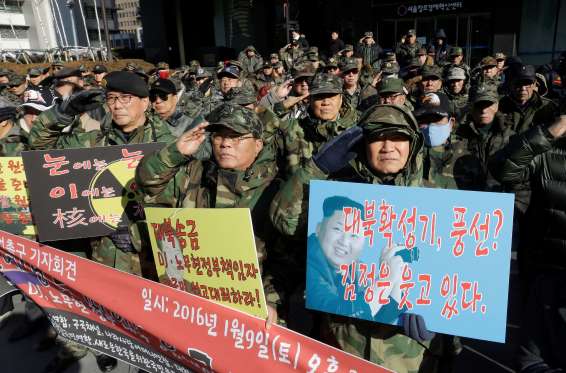May 8, 2013
BEIJING – While the recent troop standoff in a remote Himalayan desert spotlights a long-running border dispute between China and India, the two emerging giants are engaged in a rivalry for global influence that spreads much farther afield.

May 8, 2013
BEIJING – While the recent troop standoff in a remote Himalayan desert spotlights a long-running border dispute between China and India, the two emerging giants are engaged in a rivalry for global influence that spreads much farther afield.

From Africa to the Arctic, the world's two most populous countries are bumping up against each other in their search for resources and new markets. Their rivalry is spilling over into global diplomacy and international institutions where Beijing and Delhi have elbow-jabbed over development loans and a seat for India on the UN Security Council.
It is visible in the building of infrastructure in nations like Ghana, which is rich in gold, cocoa and timber and is a new oil producer. Ghana's government moved into a presidential palace financed by India in February. A month later, China handed over a new foreign ministry building.
An outright clash between the two remains unlikely. But bickering on the global stage could make bodies such as the World Bank and the United Nations less efficient, and send ripples through institutions that are increasingly important in guiding global trade, commerce and diplomacy and influence policies that affect people around the world.
"They have their tentacles throughout this global infrastructure," said Ashwin Kaja, an American lawyer leading an initiative to establish a China-India institute at Beijing's Renmin University and Jindal University in Sonipat. "If they start fighting, the threat becomes bigger and bigger as their influence grows. They are one third of humanity; it's not a small figure. They are not just countries."
Though the two nations once celebrated a shared vision as leaders of developing nations in the 1950s, that amity was shredded by a 1962 border war that still clouds relations. The recent crisis began April 15 when about 50 Chinese soldiers pitched tents on territory that both countries claim and set off finger-pointing about territorial grabs.
On Monday, Beijing and New Delhi announced an end to the three-week standoff, agreeing for troops on both sides to pull back before the fracas threatened several high-level meetings.
The two governments are publicly trying to put the best face on relations, accentuating the positive benefits of trade and diplomatic cooperation. The Indian foreign minister travels to Beijing on Thursday to prepare for a visit to Delhi later this month by Li Keqiang, his first overseas trip since becoming Chinese premier in March.
Neither country wants to threaten booming business ties. China became India's biggest trading partner in 2011 when two-way trade hit nearly $75 billion, up from $5 billion in 2002. It declined slightly last year because of the global economic downturn, and it is also heavily skewed in China's favor. Next month, China will host its first South Asian trade expo, designed to lure companies from India and elsewhere in the region.
But distrust runs high. China is a longtime ally and weapons supplier to Pakistan, and has been building strong ties with Nepal, Bangladesh and Sri Lanka, feeding Indian fears of encirclement. China is wary of India's growing ties with the United States.
Chinese dam-building on the upper reaches of the Brahmaputra River has raised fears in India that Beijing might one day reduce or turn off critical water supplies. A dispute over territorial claims in Arunachal Pradesh led to Beijing in 2009 trying to block part of a loan to India from the Asian Development Bank earmarked for a flood control project there.
China was upset in 2011 when India's state oil company, Oil and Natural Gas Corp., accepted an invitation from Vietnam to explore for oil and gas in the disputed South China Sea, bringing New Delhi into a festering territorial spat on China's doorstep.
"You can never avoid flash points," Kaja said. "The U.S. and China have lots of flash points but the difference I think is that between the U.S. and China, there is a lot more dialogue … and those are the kinds of channels that need to be created."
Their competition extends far beyond their immediate neighborhoods.
Both are pushing to gain a foothold in the Arctic, where melting ice is opening passages for shipping and could create a boom in the extraction of fossil fuels and minerals. Both China and India, along with other Asian nations and the European Union, have applied for observer status at the obscure Arctic Council.
"Neither China or India have any basis to claim to be Arctic nations, but because of the rush for minerals and resources there is a fear that we will be left behind if we don't also stake our claims in these distant parts," said Sreeram Chaulia, dean of Jindal's School of International Affairs.
Both countries are building up their navies to project influence, and the Chinese presence in the Indian Ocean is expected to grow. David Shinn, a former U.S. ambassador in Africa, expects China's navy to make more frequent visits to port cities across the Indian Ocean – in South Asia, the southern Middle East and on the east coast of Africa – within the next 10 years and to expand its reach to North African ports on the Mediterranean Sea.
"India will be concerned by a growing Chinese naval presence in the western Indian Ocean, which it has always considered its preserve. It has tolerated a significant U.S. presence there, but it has never considered the U.S. an enemy," said Shinn, who now teaches international affairs at George Washington University.
This more permanent Chinese presence "will push India to ensure good military, particularly naval relations, with all the countries in the western Indian Ocean and along the east African coast," he said.
In the recent border standoff, neither side engaged in much more than posturing.
"They were just staring at each other. So I guess that in a way is a metaphor for the relationship," Chaulia said. "There is no way that India and China can be comrades or brothers and sisters. I don't think we can be that rosy-eyed. But certainly we can manage the problems."
Courtesy: AP











































































































